Additional notes (click to expand)
Medicinal
Medicinal uses
Uses supported by clinical data
None.
Uses described in pharmacopoeias and well established documents
Treatment of digestive complaints, such as dyspepsia, gastritis, feeling of
distension and fl atulence (1).
Uses described in traditional medicine
Treatment of cystitis, dysmenorrhoea, eczema, haemorrhoids, uterine
haemorrhage, infl ammation, kidney diseases, menorrhagia, nasal congestion,
tinnitus and vaginitis. As a cholagogue, diuretic, emmenagogue,
haemostat, laxative and tonic (5).
Contraindications
Radix Hydrastis is contraindicated in cases of known allergy to the plant
material.
WHO Monographs on Selected Medicinal Plants. Volume 3. 2007. WHO, Geneva
Other use
Goldenseal is a traditional medicine of the North American Indians and is still widely used in Western herbal medicine. In the 19th century it acquired a reputation as a heal-all and was grossly over-collected from the wild and has become rare in the east of its range. It is especially valued in treating disorders of the digestive system and mucous membranes and is also extremely useful in the treatment of habitual constipation. The root is the active part of the plant. It is said to be antiperiodic, antiseptic, astringent, cholagogue, diuretic, laxative, stomachic, tonic. It is used mainly in the treatment of disorders affecting the ears, eyes, throat, nose, stomach, intestines and vagina.
Plants for a Future (2016) at www.plantsforafuture.org.uk http://www.pfaf.org/user/Plant.aspx?LatinName=Hydrastis+canadensis
link
A yellow dye is obtained from the root. The pounded root is smeared on the body to act as an insect repellent.
Plants for a Future (2016) at www.plantsforafuture.org.uk http://www.pfaf.org/user/Plant.aspx?LatinName=Hydrastis+canadensis
link
Phytochemistry
The root contains the alkaloids hydrastine, berberine and canadine. Berberine is antibacterial (effective against broad-spectrum bacteria and protozoa), it increases bile secretions, acts as an anticonvulsant, a mild sedative and lowers blood pressure. Use of this plant destroys beneficial intestinal organisms as well as pathogens, so it should only be prescribed for limited periods. The plant should be used with caution, and not at all during pregnancy or by people with high blood pressure. An infusion of the root is used externally as a wash for skin diseases, vaginal infections, gum diseases, etc.
Plants for a Future (2016) at www.plantsforafuture.org.uk http://www.pfaf.org/user/Plant.aspx?LatinName=Hydrastis+canadensis
link
Geographical distribution
- Northern America, Southeastern U.S.A.
Hydrastis canadensis L.
Family: RANUNCULACEAEGenus: Hydrastis
Species: canadensis L.
Common names: Eye Balm; Eye Root; Gold Seal; Golden Seal
Distribution summary: S.E.U.S.A.
Habit: Perennial
Hardiness: H4 - Hardy; average winter
Habitat: Woodlands
Garden status: Currently grown
Garden location: North America (A)
Flowering months: May, June
Reason for growing: Medicinal, other use
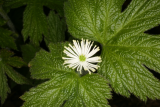


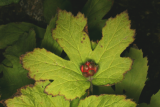
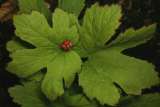
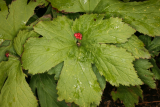
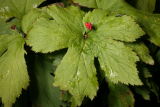
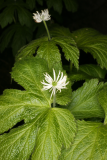

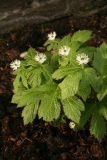
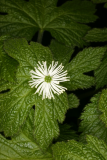
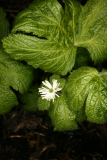
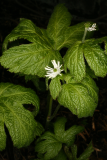
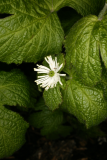
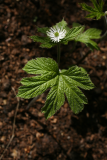
.JPG)